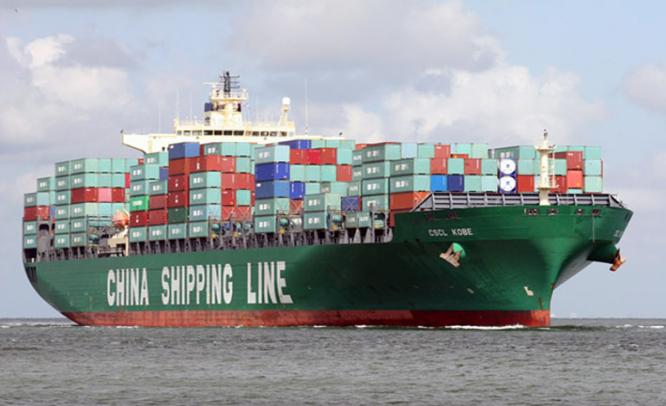The world’s second largest economy posts $31-bn balance contrary to slower growth and lower surplus predicted by economists, reports Team IFM
Beijing, February 12: Cocking a snook at doomsayers, China on Wednesday said its trade surplus rose in January compared to the year-ago period, marking a remarkable turnaround from a sharp year-on-year decline the month before and prompting a leading financial services and news provider to question the veracity of the official shipment data.
In a report, the country’s National Bureau of Statistics said that Chinese trade surplus rose to $31.86 billion in the first month of the New Year from $25.6 billion in December 2013. Analysts had expected it to fall to $23.65 billion last month.
The 14 per cent jump in surplus was quite remarkable considering it had plummeted 17.4 per cent in December. The surplus posted by the world’s second largest economy was the widest for January since 2009.
Contributing to the final balance result was a year-on-year increase of 10.6 per cent in exports compared to a 2-per cent decline predicted. This also outpaced increase in imports that rose 10 per cent over January 2012, as against a 3 per cent import growth that was expected.
Compared to this, a median forecast of the The Wall Street Journal, reached following a survey of 11 economists, had predicted only a 0.1 percent increase in exports, which had risen 4.3 percent in December.
Doubts Arise
But financial service and news provider Bloomberg was sceptical, saying rosier than expected figures fuelled speculation that “fake shipments are resurfacing”.
Referring to the overseas shipments rising 10.6 per cent from a year earlier, Bloomberg said it was “a pace that may be distorted by false invoices and holidays” and compares with the median projection of economists for a 0.1 per cent gain.
The “holiday” Bloomberg talks of refers to the general closure surrounding the Chinese New Year and consequent re-scheduling of orders that would likely have had affected the unexpected upswing in year-on-year export figures.
This year’s New Year holiday began on January 31, while last year’s started on February 9. Wednesday’s data may reflect shipment arrangements that were advanced by exporters ahead of the festival and February’s figures “may slow down a bit,” Bloomberg quoted Liu Xuezhi, an analyst at Bank of Communications Co. in Shanghai, as saying.
In 2013, China overtook the US as the largest trading nation after breasting the $4 trillion mark.
General export predictions for January ranged from a decline of 8 per cent on the lower end to a 5.9 per cent gain on the upper. This forecast was on account of an increase of 4.3 per cent in the previous month.
Similarly, actual import figures were way off that projected; as opposed to the 10 per cent rise, the forecast was an increase of only about 4 per cent from a year-ago period. Trade surplus was estimated at $23.45 billion, based on median projections in Bloomberg surveys.
Contrary to results announced on Wednesday, analyses of Chinese manufacturing from company surveys in January had indicated tough times for exporters: manufacturing measures declined in January to six-month lows.
Moreover, a measure of new export orders in the official PMI fell to 49.3, reflecting a shrinking for two months in a row.
And in December, China’s State Administration of Foreign Exchange had said it would scrutiny trade financing and ask banks to prevent companies from getting financing based on fabricated trade.
This was after it noticed high export figures for shipments to Hong Kong in December.
Wednesday’s data showed shipments from China to Hong Kong fell 18.3 per cent year-on-year in January, contrasting with gains in exports to the US and the European Union.
PMI Signals
The global economy maintained a robust pace of expansion in January, but independent surveys showed the divergence between the growth rates in developed and emerging markets – including that of China and its exports orders – continued to widen.
The HSBC EMI, a weighted aggregate of all emerging market PMI surveys by research group Markit, fell from 51.6 in December to 51.4 in January, with China’s manufacturing PMI contracting for the first time in six months and its services economy suffering the second-worst month since data collection began in 2005.
The data suggests that the world’s second largest economy “will have seen its economic growth rate slow further from the 7.5 per cent annual rate recorded in the final quarter of last year,” Markit said in a statement earlier this month.
In a report, Markit said its economic indicator – the Purchase Managers’ Index or PMI – for China’s manufacturing sector in January “signalled a deterioration of operating conditions in China’s manufacturing sector” for the first time in six months.
The deterioration of the headline PMI largely reflected weaker expansions of both output and new business – including export orders – over the month. Firms also cut their staffing levels at the quickest pace since March 2009.
On the price front, average production costs declined at a marked rate, while firms lowered their output charges for the second successive month.
After adjusting for seasonal factors, the HSBC PMI, which is arrived at after data compilation by Markit, posted at 49.5 in January, down fractionally from the earlier flash reading of 49.6, and down from 50.5 in December.
“This signalled the first deterioration of operating conditions in China’s manufacturing sector since July,” Markit said.
Commenting on the China Manufacturing PMI survey, Hongbin Qu, Chief Economist, China and Co-Head of Asian Economic Research at HSBC said: “A soft start to China’s manufacturing sectors in 2014, partly due to weaker new export orders and slower domestic business activities during January.”


